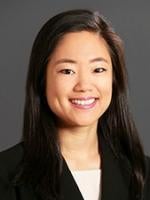On July 6, 2022, the Court of Appeals for the Second Circuit decided In Re: Eileen Fogarty, holding that a mortgagee violated the automatic stay imposed when a tenant filed bankruptcy by proceeding with a foreclosure sale that named the same tenant as a defendant. The automatic stay provisions in the Bankruptcy Code are intended to protect debtors by prohibiting any actions or legal proceedings that may dissipate the debtor’s assets or interfere with the orderly administration of the bankruptcy estate.
The mortgagor in this case, 72 Grandview LLC (the “Mortgagor”), solely owned a residential property located in Shirley, New York (the “Property”). The Mortgagor borrowed a mortgage loan from Bayview Loan Servicing LLC (“Bayview”) and executed a note (the “Note”) secured by the Property and a mortgage (the “Mortgage”) to evidence the lien on the Property in favor of Bayview. In January 2010, the Mortgagor defaulted on the mortgage loan, and Bayview filed an action for foreclosure a year later.
The debtor-appellee in the case, Eileen Fogarty, held a 99% interest in the Mortgagor (the record does not disclose who or what entity held the other 1%). Fogarty also lived at the Property. However, the Note and Mortgage were executed on behalf of the Mortgagor by an individual other than Fogarty, and Fogarty was not a guarantor of either the Note or the Mortgage.
In its initial 2011 complaint in the foreclosure action, Bayview did not name Fogarty as a defendant. In October 2014, Bayview requested that Fogarty be named as a “party defendant” as she was a “co-tenant in possession of a portion of the mortgaged premises.” On February 14, 2018, Fogarty was named as a defendant, along with the Mortgagor and the New York State Department of Taxation and Finance, in a Judgment of Foreclosure and Sale issued by the state court. The foreclosure sale was set for April 17, 2018.
Four days before the scheduled sale, Fogarty filed a voluntary bankruptcy petition. The day before the scheduled sale, Fogarty’s counsel contacted Bayview’s counsel and informed them that Fogarty had filed a petition for bankruptcy, and therefore the automatic stay was in effect and the continuation of the foreclosure sale of the Property would be in violation of the stay. Bayview’s counsel responded that because the Mortgagor is a legal entity separate from Fogarty, Fogarty’s bankruptcy petition did not stay any acts against the Mortgagor or its assets; thus, the stay did not apply to the impending foreclosure sale. Bayview then proceeded with the foreclosure sale as scheduled, and the Property was sold to a third party.
On May 11, 2018, Fogarty moved for sanctions against Bayview in the bankruptcy court, seeking actual damages, costs, attorney’s fees and punitive damages. She argued that proceeding with the sale constituted a willful violation of the automatic stay mandated by Sections 361(a)(1) and 361(a)(2) of the Bankruptcy Code. Bayview cross-moved for sanctions against Fogarty. The bankruptcy court denied both motions and emphasized in its written order that Fogarty could not be held personally liable for the Mortgagor’s default. As a result, the bankruptcy court viewed the foreclosure action as an action “solely in rem” so Bayview did not violate the automatic stay when it proceeded with the foreclosure sale.
Fogarty appealed the bankruptcy court’s decision to the U.S. District Court for the Eastern District of New York, and the district court reversed the bankruptcy court’s order and held that Bayview violated the stay. The district court reasoned that because Fogarty was a named defendant in the foreclosure action and the action was the basis for the sale, Bayview violated the stay when it proceeded with the sale. It also noted that the sale interfered with Fogarty’s possessory interest in the Property as it “significantly lessened the barriers” to evicting her from the Property. (Fogarty was evicted from the Property after the third-party purchaser in the foreclosure sale successfully sought relief from the automatic stay in the bankruptcy court, permitting him to pursue eviction proceedings.) Because Fogarty’s possessory interest was part of her bankruptcy estate, the district court concluded that it was protected by the automatic stay. Additionally, the district court held that Fogarty was entitled to actual damages as a sanction against Bayview because Bayview, with full knowledge of Fogarty’s bankruptcy filing, willfully and intentionally took the action that violated the stay.
Bayview appealed, and the Court of Appeals for the Second Circuit reviewed the bankruptcy court’s decision de novo. The Court affirmed the order of the district court, holding that the automatic stay is violated “by the foreclosure sale of a property when the debtor is a named party in the foreclosure proceedings, even if the debtor holds only a possessory interest in the property”. Accordingly, Bayview willfully violated the stay when it completed the foreclosure sale, and Fogarty was entitled to sanctions.
The Court focused its analysis on the plain text of Section 362(a) of the Bankruptcy Code. Section 362(a)(1) provides that a voluntary bankruptcy petition operates as a stay of “the commencement or continuation, including the issuance or employment of process, of a judicial, administrative, or other action or proceeding against the debtor that was or could have been commenced before the commencement of the case under this title, or to recover a claim against the debtor that arose before the commencement of the case under this title”. Section 362(a)(2) provides a stay of “the enforcement, against the debtor or against property of the estate, of a judgment obtained before the commencement of the case under this title”.
The Court agreed with Fogarty that the foreclosure sale represented a continuation of an action or proceeding against the debtor. It noted that the stay applies to actions “against the debtor”, which it interpreted as actions in which the debtor is a named defendant, and to recoveries of “a claim against the debtor”, which must encompass cases in which the debtor is not a defendant, otherwise the language would be duplicative of the former category. Because Fogarty was a named defendant in the foreclosure action, the foreclosure action was an action “against the debtor” covered by Section 361(a)(1). Further, the Court came to the same conclusion under Section 361(a)(2). Because the foreclosure judgment against the Mortgagor and Fogarty was entered on February 14, 2018, it was obtained before the commencement of Fogarty’s bankruptcy proceeding on April 13. The sale enforced a judgment against the debtor because through the sale proceedings, the Property was sold as authorized by the foreclosure judgment, which bound both Fogarty and the Mortgagor as named defendants. The Court concluded that Fogarty remained a defendant at least through the sale, and thus the sale violated the plain terms of Section 362(a)(2).
The Court rejected Bayview’s and the bankruptcy court’s view that the foreclosure action did not violate the stay because it was an in rem proceeding and Fogarty was named as a defendant only as an “interested party”. It noted that the text of Section 362(a) does not distinguish between in rem and in personam proceedings in which the debtor is a named party, and any action “against the debtor” is subject to the stay, regardless of the manner in which the debtor was named as a defendant.
The Court also rejected Bayview’s argument that the foreclosure sale did not impact Fogarty’s bankruptcy estate. The Court has previously held that even when the debtor is not a named party in an action, if the action taken against the non-debtor “would inevitably have an adverse impact on property of the bankrupt estate, then such action should be barred by the automatic stay”. The stay does not apply, however, to actions taken against third parties that are only “factually likely, as opposed to legally certain” to affect the estate. The Court did not further analyze whether the sale would have a “likely” or “certain” effect on Fogarty’s estate, relying on the fact that Fogarty was a named party in the foreclosure action, and that fact subjected the foreclosure action to the stay regardless of its effects.
Thus, the Court took a bright-line approach, holding that if a debtor is a named party in an action or proceeding, then the stay applies to the continuation of such an action or proceeding, as well as to the enforcement of an earlier judgment in such an action or proceeding. Accordingly, because Fogarty was a named defendant in the foreclosure action, the stay applied to the foreclosure sale, and Bayview violated the stay when it proceeded with the sale. The Court noted that if Bayview wanted to proceed with the sale, Bayview should have sought relief from the stay in the bankruptcy court. This holding suggests that if a tenant in a building that is the subject of a foreclosure action is a named defendant in such foreclosure action and subsequently files a bankruptcy petition, the automatic stay bars the foreclosure sale. Although the facts of this case involved a residential property, the Court did not draw any distinctions between residential and commercial properties in its analysis, so its holding may apply to commercial properties and tenants as well. In such a case, the mortgagee would need to either dismiss the bankrupt tenant from the foreclosure action or appear in the bankruptcy court to seek relief from the stay in order to proceed with a foreclosure sale.
While this case is significant and has “raised an eyebrow” or two in the banking industry, it amounts to no more than a cautionary tale to practitioners and their clients about carefully proceeding in the exercise of remedies. The blind naming of all tenants as parties listed in a common foreclosure title search is less than prudent, and the naming of tenants in a commercial setting is less likely, as in most cases, lenders want to maintain ongoing cash flow. One cautionary note, however—if the lending structure includes a lease of an affiliated or internal management office, a “master lease” structure to smooth out cash flow or vacancies, an “OpCo-PropCo” structure or REIT-driven leases, it will necessitate more careful structuring, planning and exercise of remedies. While collusive involuntary bankruptcies and the bankruptcy of guarantors are typically specified as bad acts in most carve-out guaranties, the need to address the bankruptcy, voluntary and involuntary, of an affiliate tenant is pronounced.





 />i
/>i

